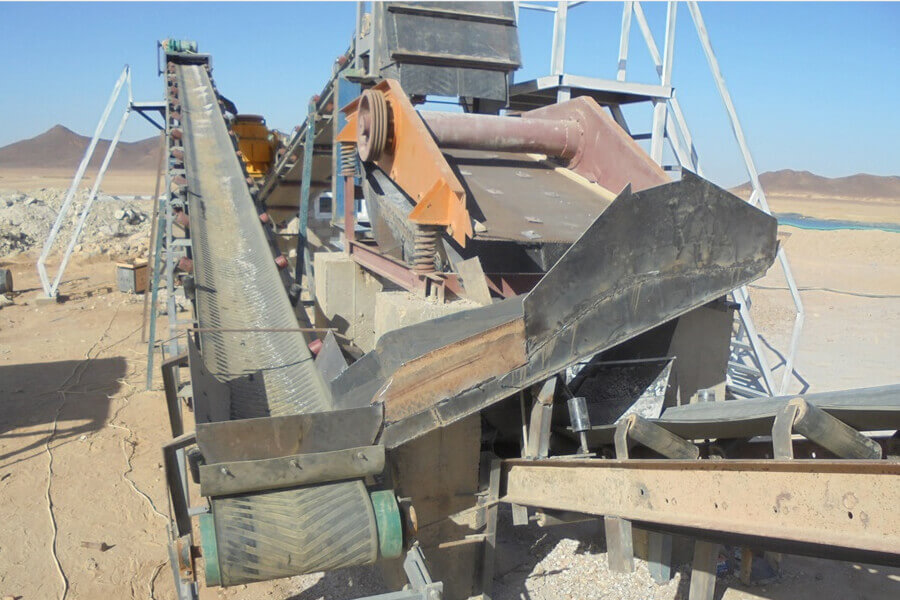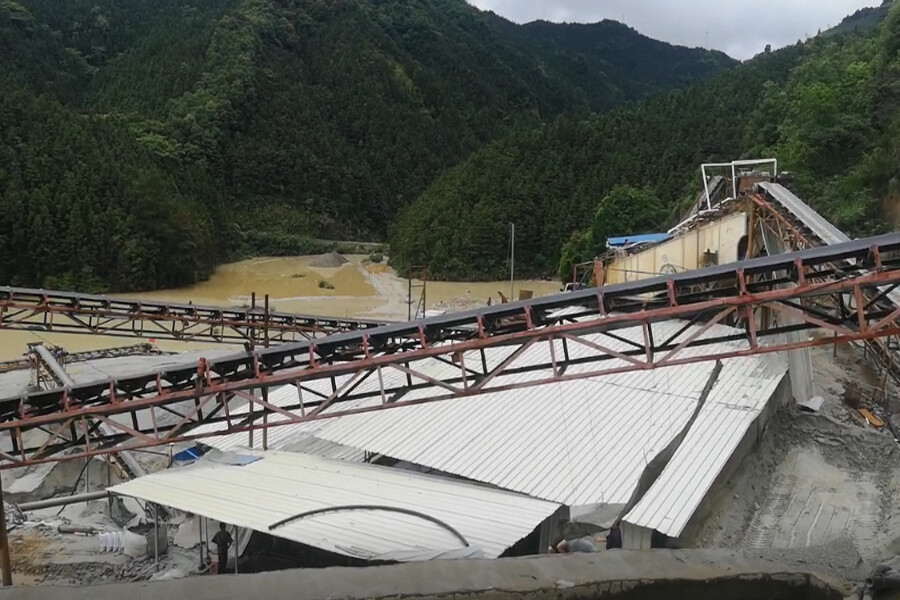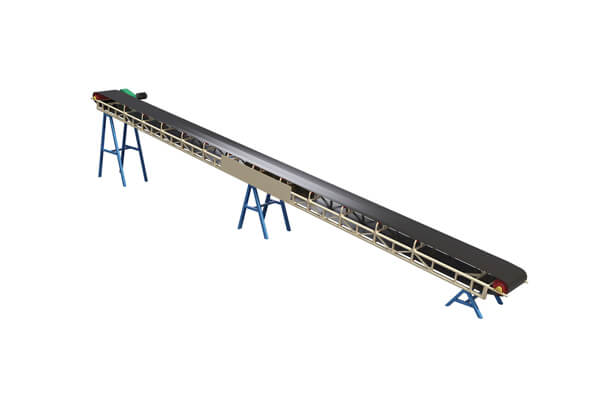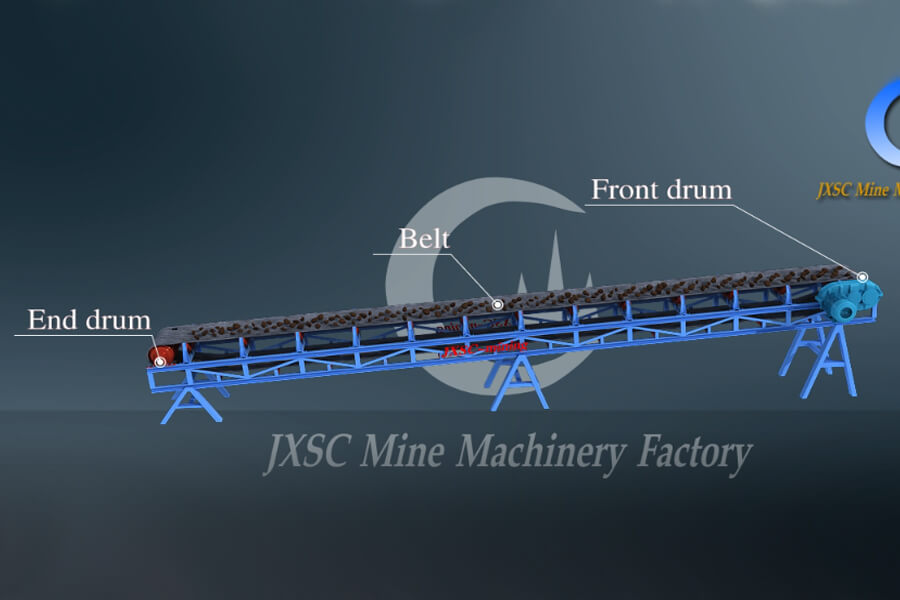We were established as the most specialized mineral processing equipment company since 1985.
Our feeders can be used to transport various bulk and granular bulk materials with a bulk density of 0.5~2.5t. The speed-regulating motor is adopted to adjust the feeding amount by changing the belt speed.


A belt conveyor is a continuous machine with a flexible conveyor belt as material carrying and traction components, which divides into fixed and mobile types. It has the features of a simple structure and high efficiency. The belt conveyor is widely used in mine production lines, coal washing plants, building materials, metallurgy, and other industries. The primary conveying materials include ore, chemical raw materials, coal, coke, cement, sand, Stones, abrasives, limestone, etc.
Belt conveyor belt materials: rubber, silicone, PVC, PU, and other materials.
Structure of belt conveyor: trough belt conveyor, flat belt conveyor, climbing belt conveyor, turning belt conveyor, telescopic belt conveyor, and other forms.
Belt conveyor drive methods: geared motor drive, electric drum drive.

Electric Drum
Compact structure, light weight, easy layout and safe operation
Buffer Stick Set
The upstream equipment plays a buffer role when the material enters the belt conveyor, which can effectively prolong the service life of the belt conveyor.
Belt
According to the characteristics of the conveyed objects, it can be manufactured into a conveyor belt with various performance requirements such as wear resistance, flame retardancy, corrosion resistance, high and low temperature resistance, etc.
1. There are two ways to adjust the production capacity of the belt feeding machine, one is to adjust the speed of the AC speed control motor, and the other is to adjust the insertion depth of the regulating gate installed on the feeding funnel.
2. Low power consumption, easy operation.
3. Easy installation and large conveying capacity.
4. Noise is low.
The material is fed to the belt surface of the belt feeder through the feeding funnel. With the rotation of the AC speed regulating motor, the belt moves forward slowly, and the material on the belt surface is fed into the next process through the first round to realize continuous feeding.

| Belt Width(mm) | Conveyor Length(m) Power(Kw) | Conveyor Speed(m/s) | Conveying Amount(t/h) | ||
| 500 | ≤12 3 | 20-30 4-5.5 | 20-30 5.5-7.5 | 1.3-1.6 | 78-191 |
| 650 | ≤12 4 | 12-20 5.5 | 20-30 7.5-11 | 1.3-1.6 | 131-323 |
| 800 | ≤6 4 | 6-15 5.5 | 15-30 7.5-15 | 1.3-1.6 | 278-546 |
| 1000 | ≤10 5.5 | 10-20 7.5-11 | 20-40 11-12 | 1.3-2.0 | 435-853 |
| 1200 | ≤10 7.5 | 10-20 11 | 20-40 15-30 | 1.3-2.0 | 655-1284 |
The fixed belt conveyor is the most used in the mining belt conveyor, and the fixed belt conveyor is divided into a flat belt conveyor and a large inclination belt conveyor. Common mining belt conveyors are TD75 belt conveyors, DTII belt conveyors, DTII(A) belt conveyors, and large-angle belt conveyors.
The most commonly used belts: PU & PVC polyvinyl chloride, NF natural fiber, NR natural rubber, SIR silicone rubber, PTPA aramide, PET polyester, TPEE thermoplastic copolyester, TPU thermoplastic polyurethane, etc.,
Our customized belt starts at 500mm wide and goes up to 1400mm wide.
You should consider the product that will be transported and the location of the conveyor system when choosing conveyor belts. Specific conveyor belt characteristics to consider include belt size, tensile strength, temperature rating, resistance to abrasion, resistance to fire, resistance to corrosion, and durability.
Conveyor belts have an estimated lifespan of three to ten years when maintained regularly.
Conveyor belts need maintenance daily, weekly/monthly, and on an as-needed basis. Daily maintenance includes checking for belt mistracking, belt slippage, material carry-back, greasing roller bearings, and performing scraper maintenance. Weekly/monthly checks for belt slippage, mistracking, and material carry-back, and repair or replacement of idlers, rollers, and dust containment systems are recommended. Malfunctioning equipment such as scrapers, idlers, belts, and, rollers should be repaired or replaced as needed.

